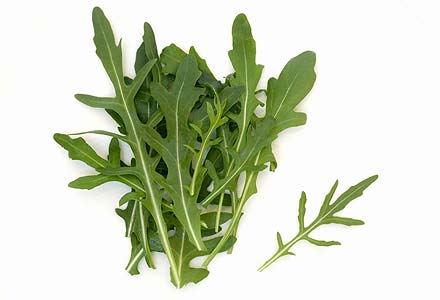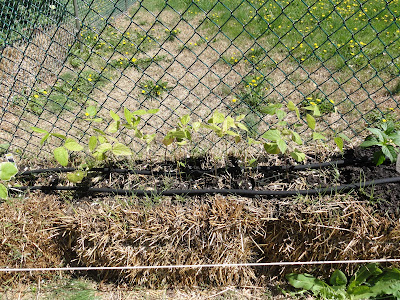This is the time for planting, both seeds and seedlings. I actually put the seedlings that I started indoors into the bales 2+ weeks ago, tempting fate with the possibility of frost. It seemed like a worthwhile gamble since we were taking a family vacation to Puerto Rico for the last week of April and the plants wouldn't survive inside. No surprise: it actually snowed(!) in PA while we were gone. York didn't get snow, but did get a frost that killed the cucumber seedlings.
 |
| Frost almost got the cherry tomatoes, but they pulled through, have new growth, and should recover nicely. |
I decided to grow the cucumbers again from seed, but right in the bales this time. I placed them in the same bales that the frost got the first ones, the last (5th) bales in rows 2 and 3. This placement should allow them to spill over the ends of the rows should the vines need more space. Space Master is in row 3 (R3,B5) with Orient Express in row 2 (R2,B5).
 |
| Lucas and Vivienne help out. |
 |
| Pepper plants: 6 varieties in one bale. |
The peppers I replaced with an assortment of six different seedlings I bought from the nursery.
They include 4 bell varieties: 1 purple, 1 yellow,
 |
| The sugar snap peas are almost ready to begin training on to the fence. |
Meanwhile the cold-hearty plants are doing well for the most part. The sugar snap peas especially have taken off nicely, giving me confidence that planting seeds directly onto the bales can be effective. These plants definitely look better than the three spindly snap pea plants from last year (purchased from the nursery) and I will be growing my peas from seed every year from now on I think.
 |
| Yummy Arugula |
The arugula is growing in well and it is heaven to have an entire bale of it. I munch a leaf or two every time I check the garden. Adding it to the mesclun blend of greens makes for great salad.
 |
| Mesclun Blend |
 |
| Broccoli plants |
 |
| The broccoli has already begun flowering |
To fill out the rest of the garden I went with seedlings started at the nursery. Planting these is as easy as digging a hole and plopping them into the bales. I found a six-pack of good looking broccoli...
 |
| Brandywine |
I used the composted bales from the 2011 garden to make a bed for the full-sized tomato plants. I lined the bed with bricks to keep the soil from eroding and mulched around the plants with the dried pumpkin vines from last year. Among the 5 tomato plants I picked up are 2 Brandywine heirlooms...
...2 Champion II...
...and one Early Girl that already had 2 tomatoes growing on it!
 |
| Yellow Summer Squash |
I then mounded more of the 2011 compost and planted the vine crops down in the corner, where they did well last year. First came the yellow summer squash...
 |
| Spaghetti Squash |
... followed by the spaghetti squash at the corner...
 |
| Sugar Cube melons |
...and last I placed the Sugar Cube melons along the back of the fence where I can train it up and over the fence to help keep the fruit hanging and off of the ground.
There are still 4 bales left to plant and I am not sure what will go in them. Right now I am leaning towards one more bale of peppers, 1 each of wax beans and green beans, and possibly planting the patty pan seeds from Burpee on the last bale of the 4th row where it could grow over the edge and ramble. I will be stopping by Valley View nursery in Hunt Valley this week though, so this could change. Until next time, happy gardening everyone!












































